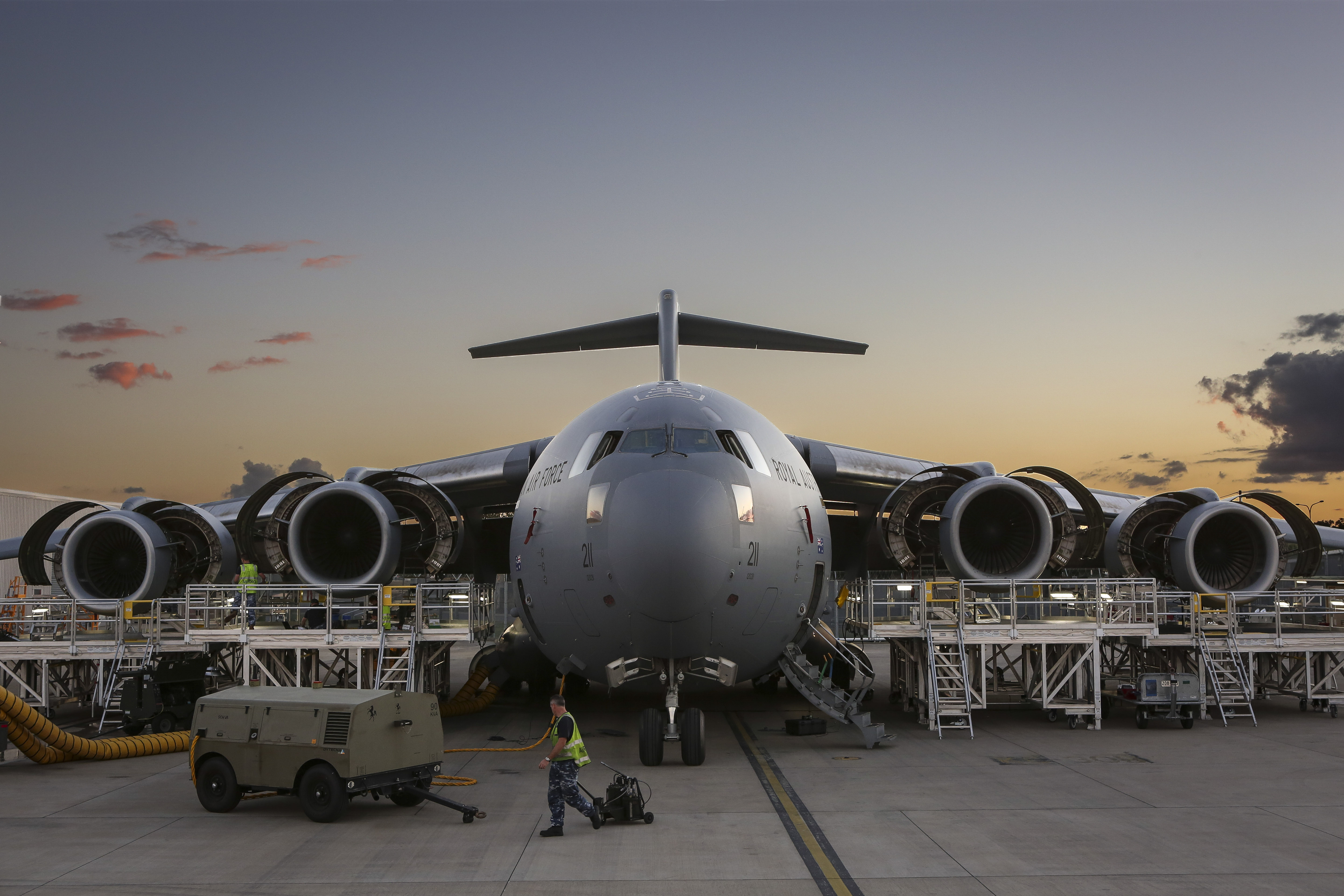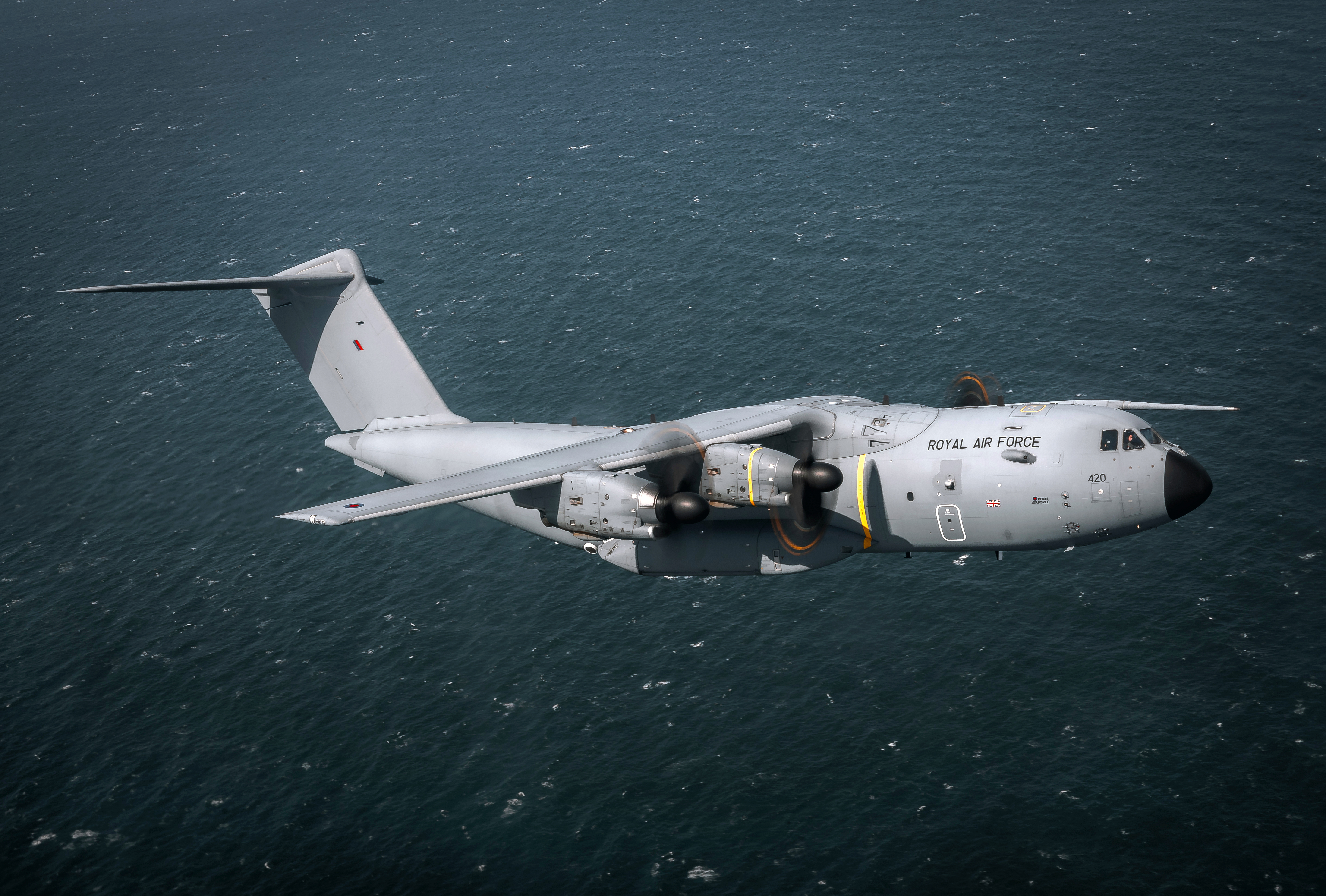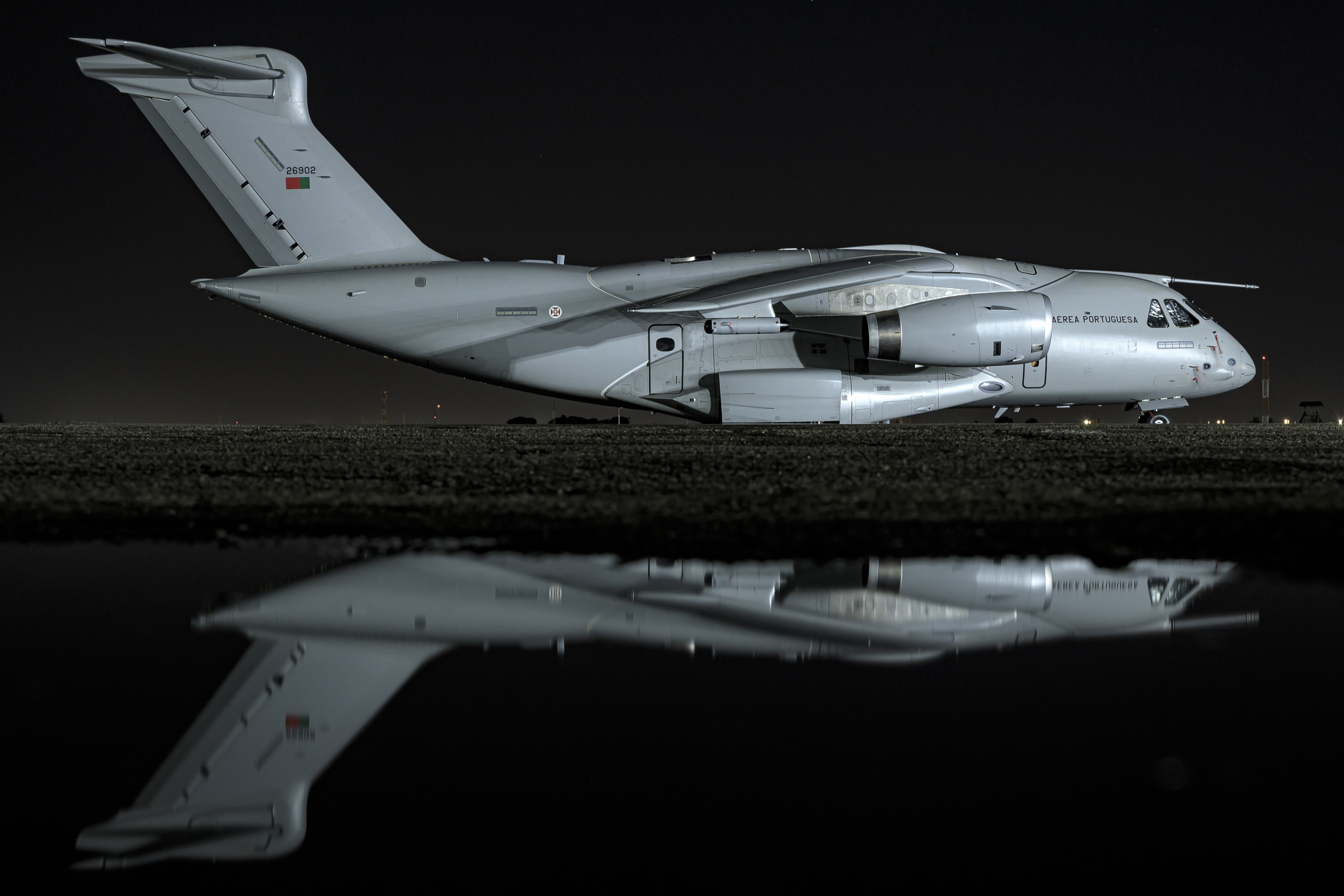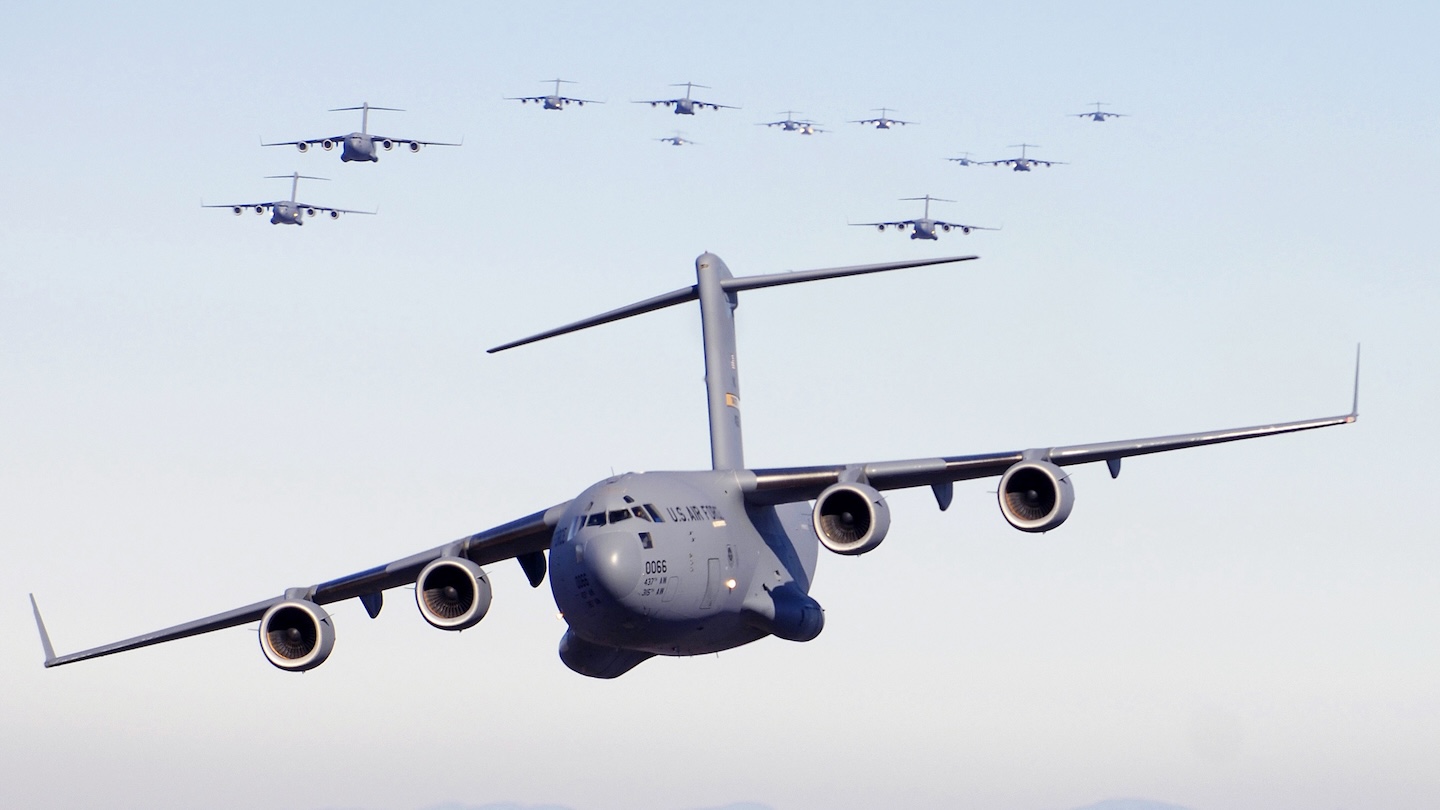A decade after the last example rolled off the production line, Boeing says it’s in negotiations with at least one customer to build more C-17 Globemaster III airlifters. The development comes as countries around the world look to boost their armed forces’ capabilities, and with no immediate successor to the C-17 waiting in the wings.
Turbo Sjogren, VP and general manager of Boeing Global Services-Government Services, confirmed to Shephard Defense at the Paris Air Show today that “early infancy” talks were underway with one country, with a view to a potential C-17 production restart.
A video shows the last C-17, the 279th Globemaster III, coming together during the last “major join” at Boeing’s C-17 facility in Long Beach, California, in early 2015:

“It is a very extraordinary effort to do,” Sjogren told the same publication, noting that it was “reflective of the utility of the aircraft.”
He added that interest in new-build C-17s was being expressed by several other countries, too.
None of those countries were named, but TWZ has approached Boeing for more details.
The nations involved may or may not be drawn from the C-17’s existing customer base.
As well as the U.S. Air Force, its biggest operator, the C-17 is flown by Australia, Canada, India, Kuwait, Qatar, the United Arab Emirates, and the United Kingdom. Finally, NATO’s multinational Strategic Airlift Capability Heavy Airlift Wing also operates C-17s.

One potentially new customer for the C-17 is Japan.
Earlier this year, Japanese Prime Minister Shigeru Ishiba disclosed an interest in buying C-17. Previously, we speculated that any such aircraft for Japan would have to be transferred from the U.S. Air Force or from the inventory of an allied operator. If a new production line were to open, that would change things entirely.
Certainly, a continued demand for the C-17 is understandable among both established operators and potential new customers.
Outside of China and Russia, there is no real equivalent to the C-17, with many countries instead turning to the Airbus A400M or the Embraer C-390 Millennium for their airlift needs, which offer a very different set of capabilities.


The A400M was originally marketed as a gap-filler between the C-130 Hercules at one end and the C-17 at the other. Meanwhile, the C-390 has often been described, in loose terms, as a jet-powered C-130.
The C-17 can transport 100,000 pounds of cargo more than 4,500 nautical miles. It can make high-angle, steep approaches at relatively slow speeds, allowing it to operate into small, austere airfields and onto runways as short as 3,500 feet long and just 90 feet wide. While it has tactical capabilities, it’s equally adept as a long-range, heavy-lift strategic transport.

Unlike the A400M, the C-17 can lift everything up to an M1 Abrams main battle tank, so its outsized load-carrying capabilities are impressive and useful.

The A400M, in contrast, is much more of a tactical transport that offers certain strategic capabilities. It can carry 30,000 pounds of cargo over 2,400 nautical miles, and it can also operate from unprepared or semi-prepared strips.
Clearly, the A400M isn’t a direct replacement for the C-17, but at the same time, Boeing says it has no planned replacement for the Globemaster III.
But bringing the C-17 back into production, whatever the demand, will not be straightforward.
Back in 2018, we reported on how Boeing had put the Long Beach, California, facilities where it built the C-17 up for sale.
This appeared to bring a definitive end to C-17 production, as well as Boeing’s serial manufacture of military aircraft in Southern California. But even at that time, there was a question about whether emerging U.S. Air Force demands might make a restart an attractive idea.
Specifically, the U.S. Air Force was, back then, looking to add three C-17 squadrons as part of a larger push to drastically expand the size of its force and to enhance its ability to move personnel and materiel across the globe. Those plans fell by the wayside, but the C-17 aspiration seemed something of a non-starter at that time.
When it was active, Boeing’s Long Beach facility, comprising a nearly four-million-square-foot plot of land adjacent to Long Beach Airport, produced 279 C-17s for the U.S. Air Force and foreign customers.

McDonnell Douglas had developed and first started production of the C-17 at the site in 1991. Boeing bought that firm in 1997, taking over the Globemaster III program and the production facilities in the process.
Though Boeing still provides C-17-related maintenance and other services in Southern California, the production facilities at Long Beach have been idle since the last Globemaster III left the plant in 2015.
Even before that, in 2013, the RAND Corporation conducted a detailed analysis of what it might cost to reboot C-17 production after a multi-year pause. The figure was close to $8 billion to support the production of up to 150 new derivatives with improved fuel efficiency. RAND assumed that Boeing would build those aircraft somewhere else rather than in Long Beach.

We have also reached out to Boeing today to get a better idea of what it would now take to start building C-17s again.
A production restart could perhaps also be aligned with Boeing’s Integrated Sustainment Program (GISP), which provides modernization and support to the existing C-17 fleet.
If a new production run proved to be feasible, Boeing would likely look again at an updated configuration, which would be a more capable and efficient subtype. Some of these improvements might also be relevant for upgrades of C-17s built in the original series.
In the longer term, the U.S. Air Force has been eyeing more exotic airlift capabilities, like blended-wing-body (BWB) designs. While there are still many unknowns about the kinds of capabilities and platforms that the service will need in the future, one thing that seems to be central, at least at this stage, is the requirement for a much greater degree of survivability compared to legacy airlift platforms. A revamped C-17 would not deliver on that front.

On the other hand, the requirement to replace the C-5 Galaxy and C-17 fleets is becoming increasingly urgent.
The program to field new U.S. Air Force airlift capabilities is still at an early stage and it’s unclear if it will be pursued under the (currently still unofficial) Next-Generation Airlift (NGAL) name, or if it will be reconfigured under the name Next-Generation Airlift System, to better represent that fact that it will involve a family of different platforms and capabilities. Regardless, the service doesn’t have much time to stand up and deliver on an entirely new strategic airlifter or family of strategic airlifters.
Absolutely critical to the fate of the U.S. Air Force C-17 fleet is the fact that these vital aircraft are being tasked at a far higher rate than planned. Major contingencies all over the world, from Afghanistan to Ukraine, in particular, have put many extra hours on these airframes. A potential future contingency in the Pacific would see the fleet taxed even harder and possibly over a longer period of time. Some argue that more C-17 capacity is needed just to fight that conflict in the distributed manner the Pentagon wants. On top of this, promising new capabilities are giving C-17s the ability to execute kinetic roles via standoff weapons delivery, which could be a great way to take some pressure off the bomber force. At the same time, the question of where the capacity to actually execute that mission would come from during a time when aerial logistics would be pushed to the max isn’t clear. Hence why the call for more C-17s, or something that is similarly capable, is growing louder.
With all this in mind, the U.S. Air Force might well welcome the opportunity to buy additional C-17s, if it can find the funds to do so, even if only as a gap-filler. In fact, depending on the level of foreign interest in new-build C-17s, an order from the Pentagon may well be critical in order to get any production restart off the ground.
At this point, it remains very questionable whether restarting C-17 production is possible, let alone economical.
On the other hand, there’s little doubt that customers looking for an airlifter that’s able to land on an unimproved airstrip in the middle of nowhere or carry an Abrams main battle tank have very few realistic options at this point in time.
Contact the author: thomas@thewarzone.com
